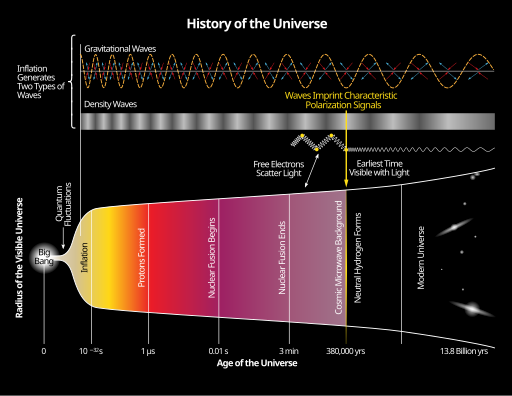
An “expert voice” astrophysicist explains that the Big Bang is now the “vanilla Big Bang,” which is unpopular because it doesn’t explain all observations:
The Big Bang model is our most successful explanation for the history of the universe that we live in, and it’s ridiculously easy to encapsulate its core framework in a single, T-shirtable sentence…
But
But there’s no reason for our universe to be flat. At large scales it could’ve had any old curvature it wanted. Our cosmos could’ve been shaped like a giant, multidimensional beach ball, or a horse-riding saddle. But, no, it picked flat. And not just a little bit flat. For us to measure no curvature to a precision of a few percent in the present-day universe, the young cosmos must’ve been flat to one part in a million.
Why? Of all the possible choices for curvature, doesn’t nearly perfectly flat seem a little suspicious?
The best solution we have to these conundrums is a process called inflation. The idea was first proposed — and coined! — by physicist Alan Guth in 1980 when he suggested that the same exotic process that flooded the universe with magnetic monopoles could have sent the cosmos into a period of staggeringly rapid expansion.Paul Sutter, “Why We Need Cosmic Inflation” at Space.com
Well, that’s fine but Sutter admits that the hypothesized inflation mechanisms are “poorly understood” and that a cosmology theory must not only explain observations but make successful predictions. We are waiting.
Currently, cosmic inflation is being promoted with some pretty wild theorizing. Faster than light travel is just the beginning.
Follow UD News at Twitter!
See also: Does the beginning of the universe require a cause? Alexander Vilenkin says no. William Lane Craig says yes.
The Big Bang: Put simply, the facts are wrong.
At Science: Hawking’s last work attempted to stick a pin in eternal inflation of the cosmos
and
Cosmic inflation theory loses hangups about the scientific method